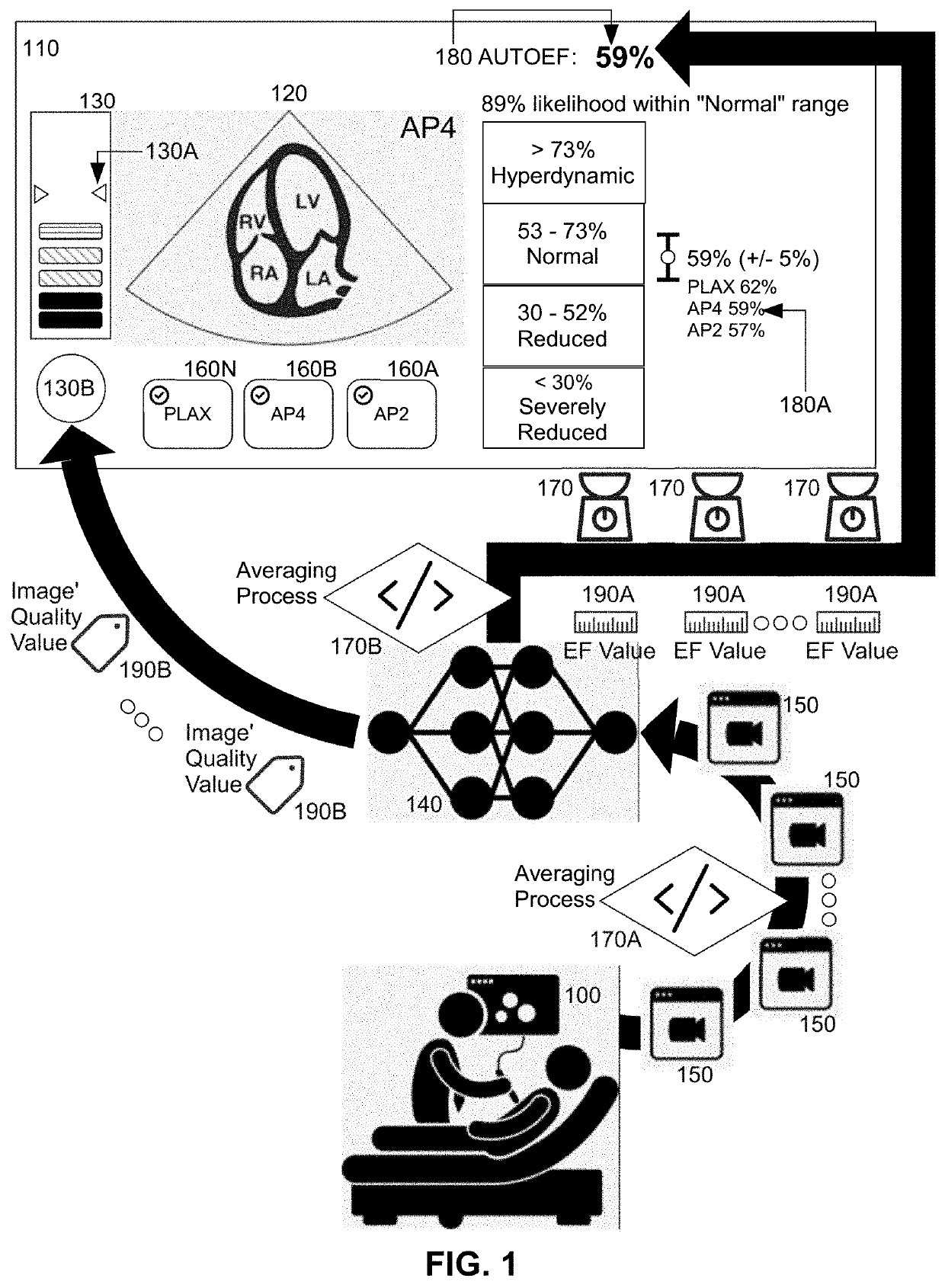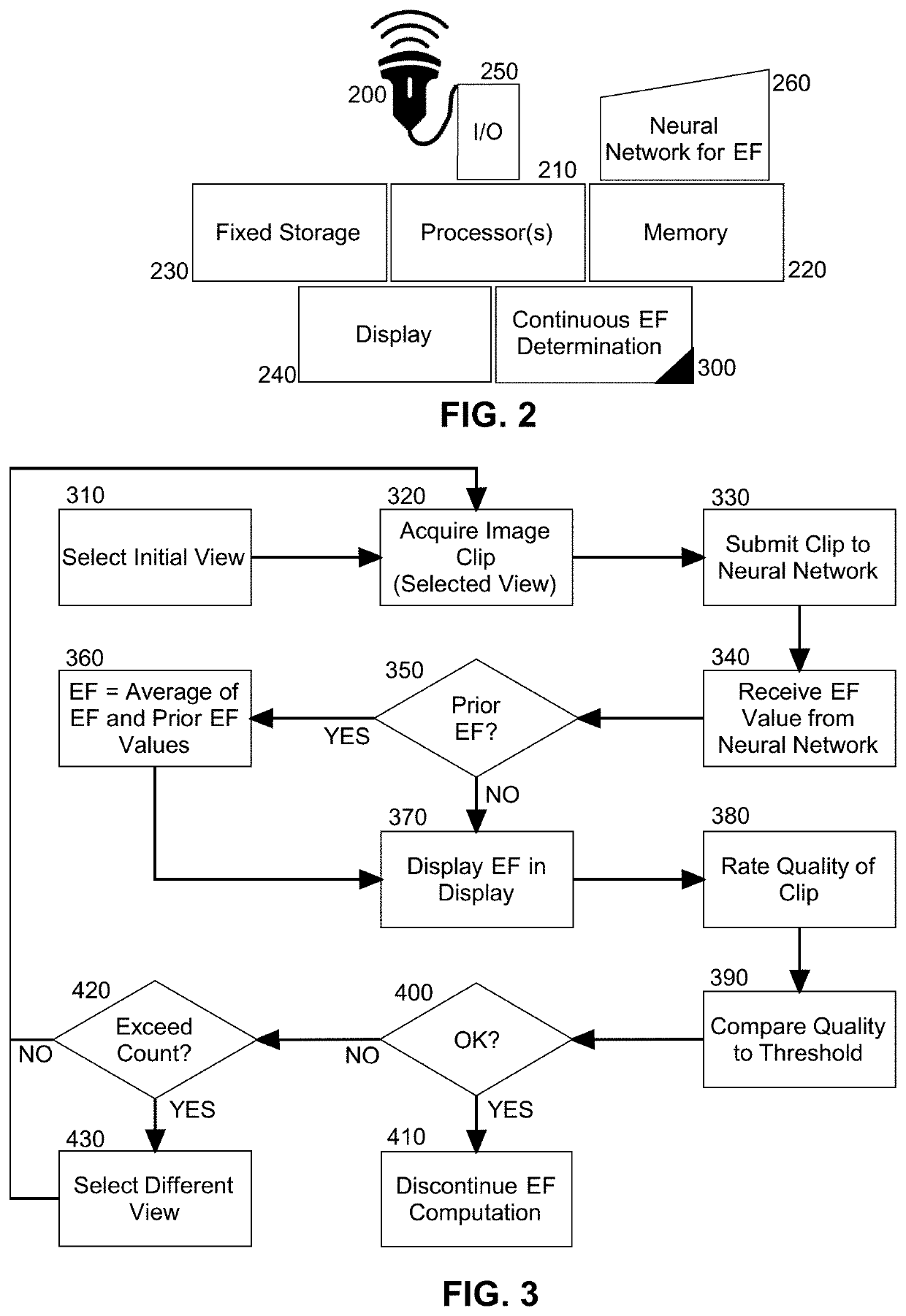Continuous and dynamic ejection fraction determination
a technology of ejection fraction and determination method, which is applied in the field of systolic function of the heart, can solve the problems of delayed treatment of patients, significant worsening of disease conditions, and inaccurate assessment of current ejection fraction measurement methods
- Summary
- Abstract
- Description
- Claims
- Application Information
AI Technical Summary
Benefits of technology
Problems solved by technology
Method used
Image
Examples
Embodiment Construction
[0016]Embodiments of the invention provide for the continuous and dynamic computation of ejection fraction in a data processing system. In accordance with an embodiment of the invention, utilizing one or more views of a heart, different sets of contemporaneous imagery of the heart or a portion thereof are acquired ultrasonically and submitted to a neural network trained to correlate different sets of imagery of the heart with different ejection fraction values without requiring a tracing of the boundary of any portion of the heart. The neural network then produces a corresponding ejection fraction value for each submitted set of imagery which may then be displayed in a display of a computer. In this way, rather than receiving merely a finalized value for ejection fraction from a single set of acquired imagery of the heart, a continuously display of ejection fraction determinations may be provided in real-time as the heart is subjected to ultrasound imaging such that an operator may ...
PUM
 Login to View More
Login to View More Abstract
Description
Claims
Application Information
 Login to View More
Login to View More - R&D
- Intellectual Property
- Life Sciences
- Materials
- Tech Scout
- Unparalleled Data Quality
- Higher Quality Content
- 60% Fewer Hallucinations
Browse by: Latest US Patents, China's latest patents, Technical Efficacy Thesaurus, Application Domain, Technology Topic, Popular Technical Reports.
© 2025 PatSnap. All rights reserved.Legal|Privacy policy|Modern Slavery Act Transparency Statement|Sitemap|About US| Contact US: help@patsnap.com


